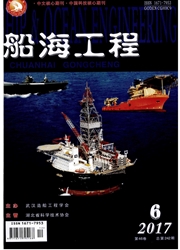

 中文摘要:
中文摘要:
针对水下工程应用中的自治水下机器人目标观测的路径需求问题,提出基于生物启发神经动力学的路径规划方法,在二维栅格地图的基础上,建立二维生物启发神经网络模型,引入来自目标观测任务区域的激励信号和障碍物的抑制信号,任务区域能够全局地吸引机器人,障碍物对机器人具有局部排斥作用,从而使得机器人能够近距离观测目标。仿真结果表明,在未知的动态水下环境中,机器人能够有效规避障碍物,自主规划出目标观测路径和返航路径。
 英文摘要:
英文摘要:
A novel path planning based on bio-inspired neurodynamics for autonomous underwater vehicles ( AUVs) to carry out observation of underwater structures at close range was proposed. The model was topologically expressed in a 2D neural net-work based on a 2D grid map. In the model, the excitatory and inhibitory inputs to the neurons in the network were generated from the target surroundings of underwater structures and obstacles respectively. Obstacles locally push the AUVs away by nega-tive neural activity in the network, while the AUV was globally attracted through the positive neural activity to reach the target near surroundings of the objects. The AUV choosed its path from the dynamically changing activity landscape of the neural net-work to continue its observation mission. The simulation results showed that the proposed path planning is effective for AUVs to implement close-range observations of underwater structures with obstacle avoidance in an unknown dynamic underwater environ-ment, and it also can plan the path of the return voyage when missions are completed.
 同期刊论文项目
同期刊论文项目
 同项目期刊论文
同项目期刊论文
 期刊信息
期刊信息
